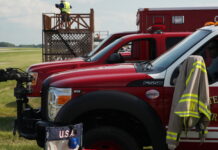There are four components of a safety management system (SMS): Safety Policy, Safety Risk Management, Safety Assurance and Safety Promotion. We are going to take a look at each of these components and how they play a role in the ICAS safety program as it exists today over the next four issues of Ops Bull. This week we will discuss Safety Policy.
Safety Policy is an organization’s defined intentions, safety objectives and philosophies with backing and commitment from the organization’s leadership. As an example, the intentions and objectives of the ICAS safety program are spelled out in the ICAS Safety Creed. Safety policy also requires that ICAS define policies, procedures and organizational structures to accomplish the goals. The primary policies and procedures for achieving ICAS’s organizational safety goals are contained within the ICAS Safety Incident Procedures (SIP) document which dictates ICAS’s response to any hazard report from an event. The SIP defines the framework in which the procedures of ICAS operate. The primary user of the SIP is, fittingly, the ICAS Safety Committee. The Safety Committee interprets ICAS’s safety goals and through the use of the SIP, enforces and controls the safety policy.
When used in conjunction with each other, the ICAS Safety Creed and the Safety Incident Procedures establish the foundation of our safety policy. In turn, the safety policy influences the next two components of SMS to be discussed: Safety Risk Management and Safety Assurance.








